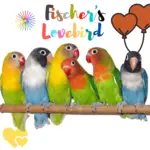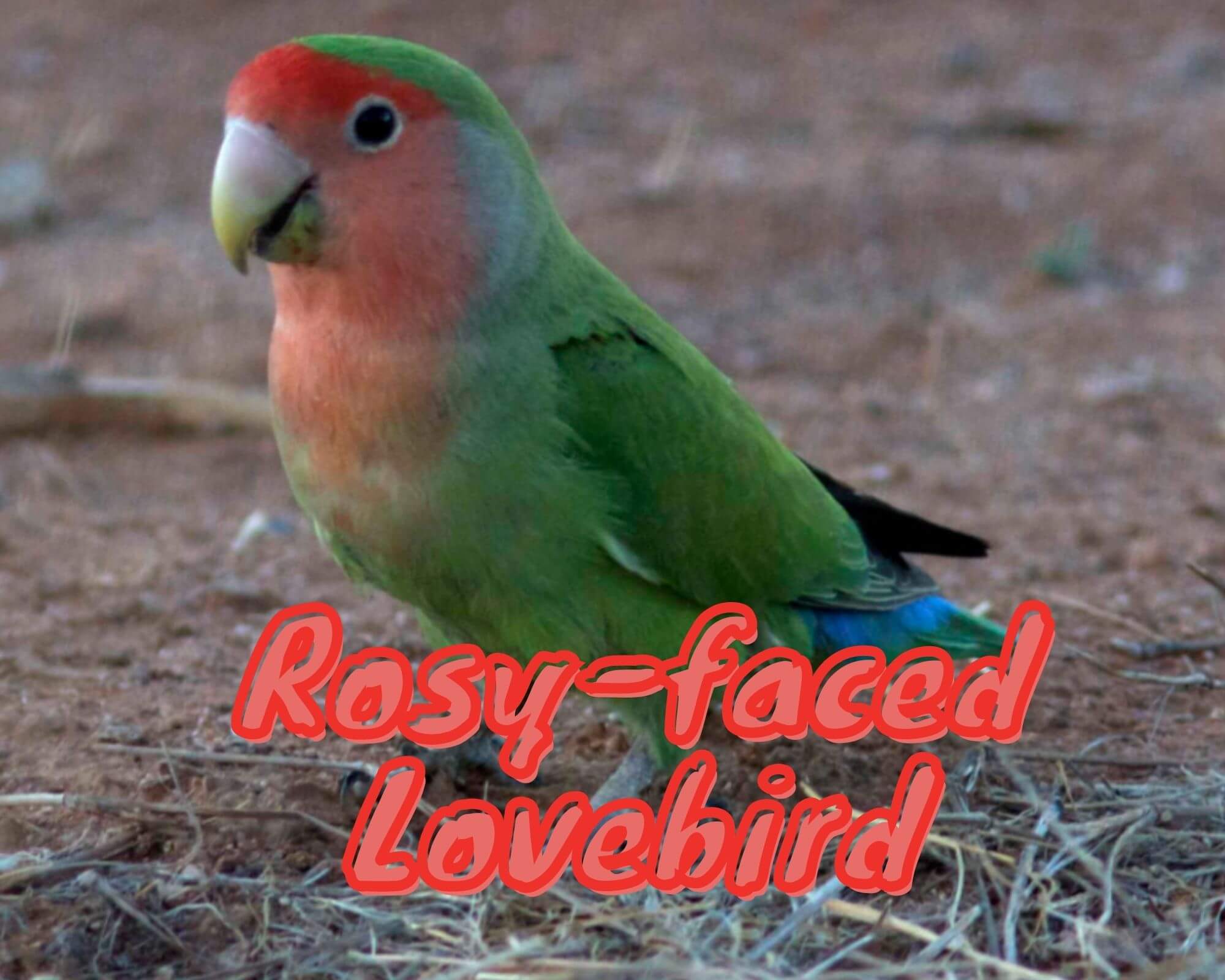
Rosy faced Lovebird 15–18 cm; 43–63 g. Pale grass green, somewhat darker above, with bright blue rump; peach pink face and upper chest, darker reddish crown.
Bill yellowish; fleshy white eye-ring. Immature pale buff-brown on the face and upper chest. Race catumbella richer and brighter.
Systematics History
Editor’s Note: This article requires further editing work to merge existing content into the appropriate Subspecies sections. Please bear with us while this update takes place.
Two subspecies were recognized.
Subspecies
Feral populations were established in the late 1980s in Arizona, USA.
Agapornis roseicollis catumbella Scientific name definitions
Distribution
Agapornis roseicollis roseicollis Scientific name definitions
Distribution
Distribution
Editor’s Note: Additional distribution information for this taxon can be found in the ‘Subspecies’ article above. In the future, we will develop a range-wide distribution article.
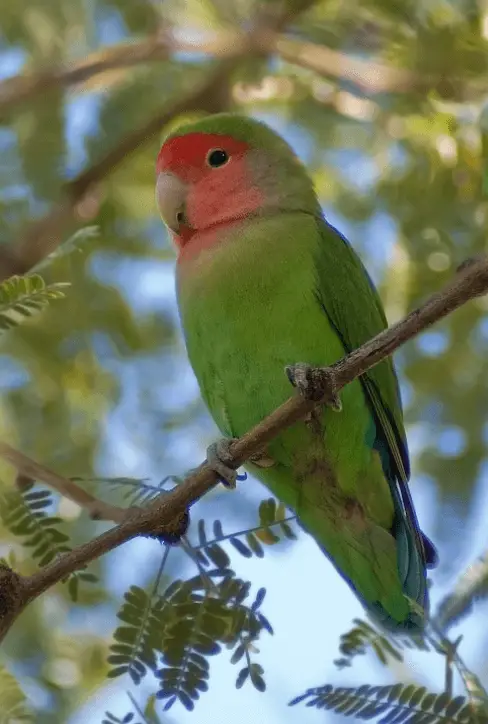
Rosy faced Lovebird
Habitat
Arid woodland, scrubby hillsides, and tree-lined watercourses including river canyons, in rocky terrain, where rainfall exceeds 100mm, and where water accessible.
Coastal sandstone cliffs in Kisama National Park. Escapes occur in urban areas. Up to 1500 m.
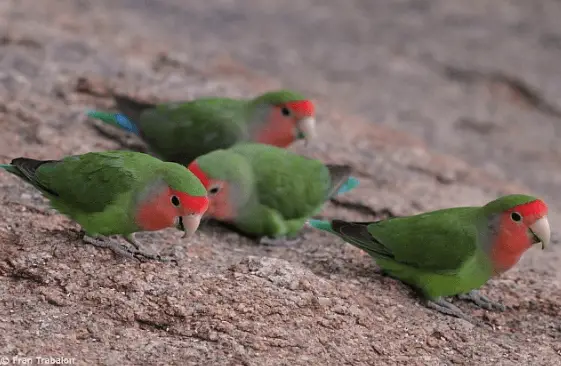
Rosy faced Lovebird
Movement
Resident, but wanders locally, e.g. when temporary waterholes dry up.
Rosy faced lovebird food
Mainly seeds of Albizia (also flowers) and Acacia, and buds and foliage of various plants including Euphorbia. Pest in grain fields, notably on maize; also eats cultivated sunflowers. Very dependent on water.
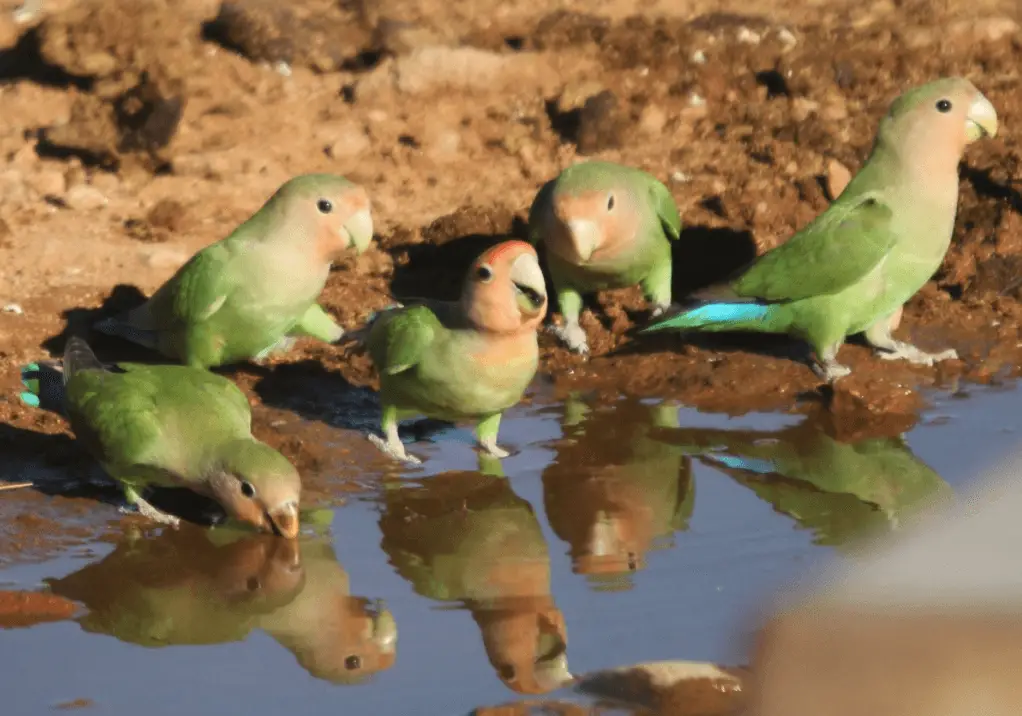
Rosy faced Lovebird
Rosy faced lovebird call
The commonest vocalization is a chirruping disyllabic “chi-reep!”. When perched, utters a wide variety of chirruping and screechy notes; also short rattles. Large flocks maintain continuous twittering.
Rosy-Faced Lovebird Chirping Sounds – Orange-Faced Green Pied & Red-Headed Green Opaline
SOURCE: Video Kameraku
Breeding
Feb–Apr, i.e. late summer, when main seed pods ripening; but Jul in N of range. Nests in rock crevices although also utilizing nests of Sociable Weaver (Philetarius socius) and even buildings and bridges; nest cup-shaped, made of straw, twigs, and other material. Eggs 4–6; incubation c. 23 days, by female only; fledging c. 43 days.
ROSY FACED LOVEBIRDS (H D)
SOURCE: SUBBALAKSHMI SASTRY
Pach faced lovebird baby
It is important to note the growth progress of your baby bird. This helps to understand your bird’s feather growth and health. Below are details and pictures of the growth progress of my pet, Mumu.
Week 3
Mumu was a small baby with minimal feathers. Its tail was blue in color and looked like a plastic dartboard. Her stomach was bare and her skin was visible. His back had just a line of feathers. Inside his wings, the skin was featherless but there were slits from which his wings grew.
Week 3, Day 4
The ends of the tail were prominent and had a mixture of colors. More feathers started to appear on the back and on his wings. His wings were growing.
Week 4
Its size had increased. Its wings were almost entirely feathered. The tail elongated and the ends of the tail took the form of leaves. But her cheeks and her head still had a few spots to cover.
Week 4, Day 5
He was almost completely feathered at this point. He looked like an adorable little ball of fur. He was about to become fledged (with wing feathers big enough to fly; able to fly).
Week 5, Day 3
It was fully feathered and its beak was properly formed. The tail and wing feathers were finely developed.
Week 6, Day 2
Fully grown and fledgling.
Rosy faced lovebird price
The price of a rosy faced lovebird is 25 to 60 dollars.
Rosy faced lovebird lifespan
The life span of Lilian lovebirds is 10-12 years. The main health problem for these species is loneliness. These birds need a partner for life.
Conservation Status
Not globally threatened. CITES II. Flocks of hundreds at good food sources, but otherwise in small flocks. Frequently kept as a cage-bird, Angola, and the export of thousands of birds have greatly contributed to the diminution of populations in the S of the country.
Present in Kisama National Park near Luanda, and in Augrabies Falls and Kalahari Gemsbok National Parks, South Africa.

